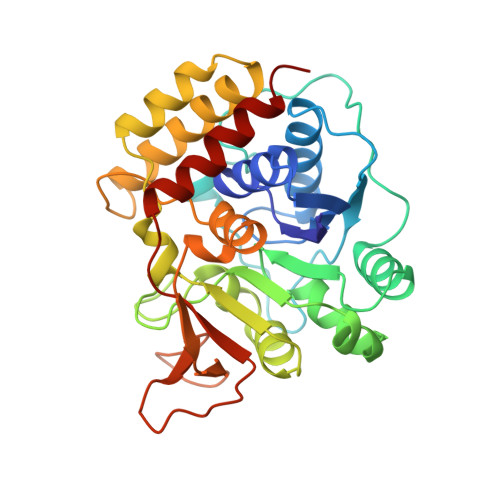Trypanosomal nucleoside hydrolase. A novel mechanism from the structure with a transition-state inhibitor.
Degano, M., Almo, S.C., Sacchettini, J.C., Schramm, V.L.(1998) Biochemistry 37: 6277-6285
- PubMed: 9572842
- DOI: https://doi.org/10.1021/bi973012e
- Primary Citation of Related Structures:
2MAS - PubMed Abstract:
Nucleoside N-ribohydrolases are targets for disruption of purine salvage in the protozoan parasites. The structure of a trypanosomal N-ribohydrolase in complex with a transition-state inhibitor is reported at 2.3 A resolution. The nonspecific nucleoside hydrolase from Crithidia fasciculata cocrystallized with p-aminophenyliminoribitol reveals tightly bound Ca2+ as a catalytic site ligand. The complex with the transition-state inhibitor is characterized by (1) large protein conformational changes to create a hydrophobic leaving group site (2) C3'-exo geometry for the inhibitor, typical of a ribooxocarbenium ion (3) stabilization of the ribooxocarbenium analogue between the neighboring group 5'-hydroxyl and bidentate hydrogen bonds to Asn168; and (4) octacoordinate Ca2+ orients a catalytic site water and is liganded to two hydroxyls of the inhibitor. The mechanism is ribooxocarbenium stabilization with weak leaving group activation and is a departure from glucohydrolases which use paired carboxylates to achieve the transition state.
- Department of Biochemistry, Albert Einstein College of Medicine, Bronx, New York 10461, USA.
Organizational Affiliation:


















